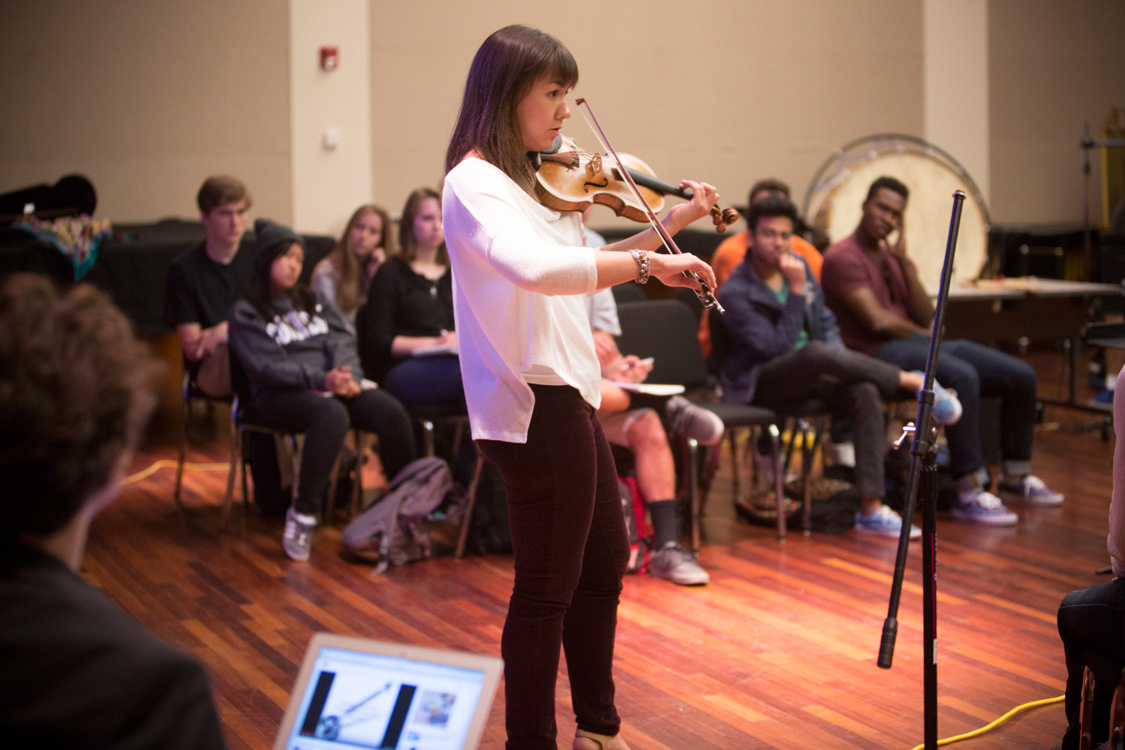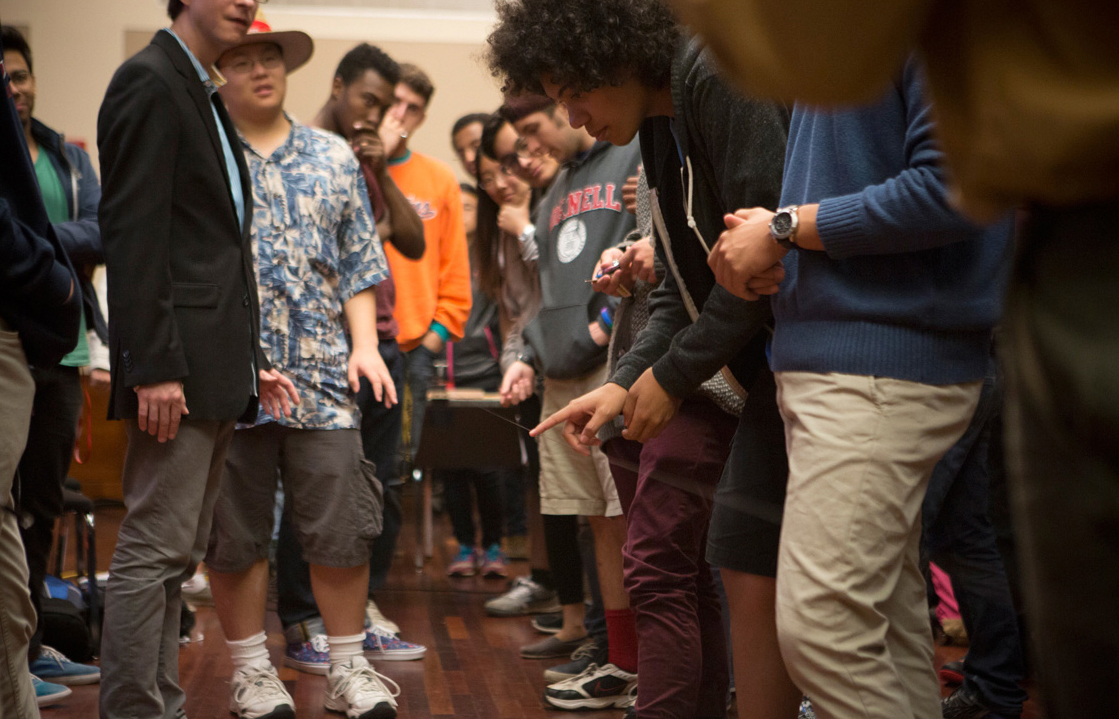Music department's curriculum playing a new tune
By Kathy Hovis


Students majoring in music at Cornell will now find a more flexible route through the program and an emphasis on improvisation and other techniques to stretch their musical muscles in new ways.
“We’re developing a totally new way of understanding how musical language works,” said Roger Moseley, assistant professor and chairman of the music department’s curriculum committee. “There’s a strong legacy of music making and thinking here at Cornell, so this doesn’t supplant our traditional strengths, but rather expands them.
“We’re thinking about listening as a primary way of engaging with music and then moving from listening to doing. It’s a more embodied way of learning.”
Under the old curriculum, music majors took introductory classes in theory and history. Then they went through four semesters of theory and another four classes in history as well as performance requirements.
“After those four semesters, the students who survived were the majors,” Moseley said with a smile. “This new curriculum will be more accessible and appealing to different types of students.”
Several new classes, including Intro to Music Studies, taught by Judith Peraino, and Elements of Music, taught by Andrew Hicks, are “broadening the base” for students who want to become majors, Moseley said.
“We recognized that there are many paths into a deep interest in music,” said Steven Pond, chairman of the music department.
While some students are interested in performance, music history or musicology, others are interested in cultural studies or music and technology, so the new major embraces all of those areas of study.
“Our work as educators in the liberal arts is to create students who are critical thinkers and who are invested in pursuing excellence in their area of study,” Pond said. “But there is also great worth in studying music because of its own importance in our cultural and artistic lives.”
Many of the department’s majors are double majors, so classes that show music’s relation to other fields are highly sought after. The new classes do just that, Moseley said.
In Hicks’ new class, students build instruments, learn the science behind sound waves, and investigate how human ears “hear” sound and relay it to the brain.
Yabework Kifetew ’19, an urban studies major in the College of Architecture, Art and Planning, said the active nature of Hicks’ class allowed her to explore the elements of music rather than just read about them.
“I learned how deeply integrated music is with just about every facet of our day-to-day lives, in history, in society, in the universe, in math,” she said.
Peraino, who specializes in popular music as well as medieval music, said the new classes also reflect the diverse ways current student engage with music.
“I don’t think you need to be able to read music to be a musician or to be a keen interpreter of music,” she said. “You have to have a good set of listening skills and technical vocabulary, but if you can hear the 12-bar blues and understand the blues structure, you don’t have to read it, you just have to be able to hear it.”
A renewed emphasis on improvisation is another change to the curriculum.
“Mozart and Beethoven both made their reputations as improvisers,” Moseley said. “Any musician of that period would be expected to be able to come up with something on the spur of the moment.”
As for performance requirements, the department has expanded the number of campus musical groups whose activities can qualify for required credits. All students will still work closely with a faculty member to ensure they are having rich learning experiences, Moseley said.
With the new curriculum, the department is breaking out of the Western European traditional mold, Peraino said, and “recognizing that as a curriculum of a liberal arts education, we need to be thinking of musical engagement in a more expansive way.”
And while the department prepares students for careers as professional musicians or music educators, it also plays another key role, Pond said.
“There’s a wealth of music-making that happens beyond the students who are music majors,” he said. “Those students, regardless of their livelihoods, will continue to love music and be musically minded throughout their lives.”
Although this type of curriculum shift is currently being discussed at many universities, Cornell’s move is unusual and sorely needed, said Elisabeth Le Guin, professor and director of graduate studies in the Department of Musicology at UCLA’s Herb Alpert School of Music.
“The type of training promulgated in conservatories ‘conserves’ a set of hierarchical relationships that constrain and in many cases shut down real communication, which by its nature is dialogic, a two-way street,” she said. “New approaches are needed, that empower the student from the beginning to hear new things, to know them and to respond fully to them.”
Kathy Hovis is a writer for the College of Arts and Sciences.
Media Contact
Get Cornell news delivered right to your inbox.
Subscribe